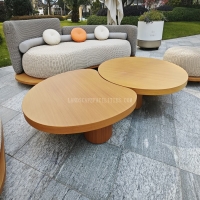Welcome to the website for landscape facilities products and knowledge.
How does the table’s design account for the need to quickly transition between lecture and interactive sessions?
The modern educational landscape demands dynamic learning environments that can effortlessly shift between traditional lecture formats and interactive, collaborative sessions. At the heart of this pedagogical flexibility lies intentional table design that addresses the crucial need for quick transitions. Unlike conventional rectangular tables that anchor a room in static formation, contemporary educational furniture incorporates modularity, mobility, and multifunctionality.
Innovative classroom tables often feature lightweight construction with integrated mobility elements, such as smooth-rolling casters that lock securely in place. This allows educators and students to quickly rearrange tables from straight rows suitable for lecture-based instruction into small clusters, circles, or U-shapes that foster interaction and group work. Many designs incorporate folding mechanisms or nesting capabilities, enabling compact storage when floor space needs to be cleared for different activities.
The geometry of these tables further supports transitional needs. Trapezoidal, triangular, or boat-shaped tables offer superior configurability compared to traditional rectangles, allowing them to fit together in multiple formations without wasted space. Some manufacturers create tables with reversible tops—one side optimized for individual work during lectures, the other featuring whiteboard or marker-friendly surfaces for collaborative brainstorming sessions.
Height-adjustability represents another critical design consideration, with tables offering manual or electric mechanisms to transition between seated and standing configurations. This accommodates different teaching styles and learning preferences while promoting movement and engagement. Many designs also incorporate technology integration features like built-in power outlets and cable management, supporting both instructor presentations during lectures and student device use during interactive sessions.
The material selection for these tables contributes to their transitional capability, with durable yet lightweight surfaces that resist damage during frequent movement. Edge profiles are engineered for safety during reconfiguration, while sturdy legs provide stability in various formations without obstructing legroom or movement pathways.
Through these deliberate design choices, educational furniture transforms from static infrastructure into dynamic tools that empower educators to fluidly adapt their teaching environment. This responsive approach to table design ultimately enhances learning outcomes by matching physical space to pedagogical method, ensuring that the transition between lecture and interaction becomes a seamless element of the educational experience rather than a disruptive interruption.
Related search:

Recommendation
Elliptical metal outdoor table with nested design, resembling wood grain, round table